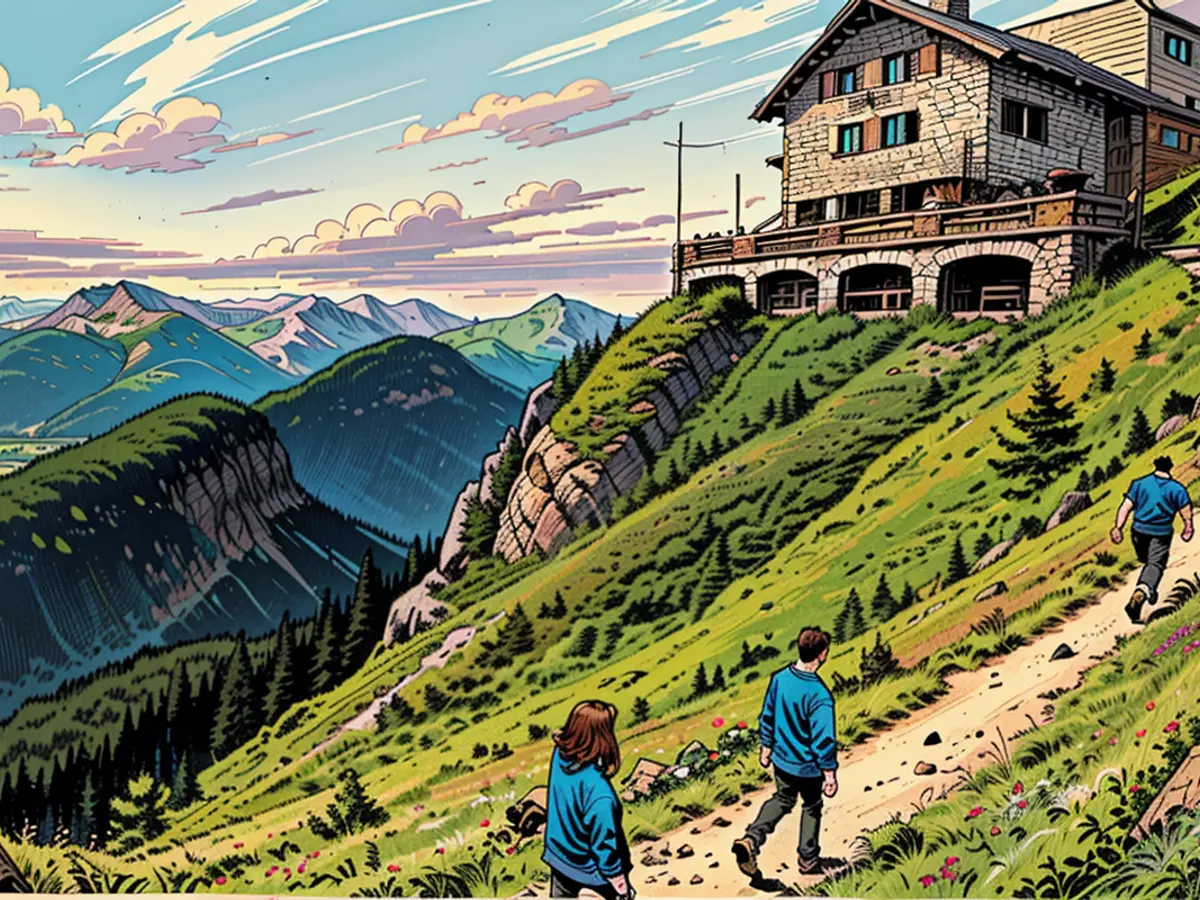- Operating mountain huts becomes challenging due to climate change.
Global warming is posing significant challenges to the German Alpine Association's (DAV) mountain hut operations. The escalating temperatures in the mountains and the worsening water scarcity are making it hard to maintain the high-altitude accommodations, as noted by Robert Kolbitsch, head of huts and trails at DAV's federal association in Munich.
Approximately 20% of the around 200 managed DAV huts currently demand immediate attention - a tendencies that's on the rise. This is due to the failure to sustainably source water or the inability to maintain the previous energy supply levels.
Scant water resources have led to the closure of the Neue Prager Hut for the third consecutive year. Situated at around 2,800 meters above sea level in the Austrian High Tauern, the hut solely relies on surface water, including glacier meltwater and rainwater. Unfortunately, this summer, the hut experienced temperature spikes around 20°C, which is unusually high and a clear indication of the temperature rise at this altitude, Kolbitsch explained.
DAV turns to composting toilets
Just like many other mountain huts, most of the water at the Neue Prager Hut is utilized for flushing toilets. In the absence of water, maintaining hygienic hut operations becomes impossible. To address the water scarcity issue in the future, DAV plans to switch to composting toilets from the next season. Construction is set to commence in May next year.
The implementation of composting toilets in many high-altitude Swiss mountain huts is expected to alleviate the water crunch in this region as well. However, the conversion process comes with its challenges, Kolbitsch mentioned. Composting toilets require more space than the present setup, and the Neue Prager Hut must comply with heritage conservation regulations. Consequently, DAV will need to construct a new two-story building beside the hut for the composting toilets. Simultaneously, the hut's water tank will be expanded from 20 to 30 cubic meters.
Kolbitsch estimates the conversion costs to be between 600,000 to 800,000 euros, with around 55% of the sum expected to be funded. Looking ahead to numerous other DAV huts that also require attention, the Alpine Association must prepare for substantial expenses in the near future. Kolbitsch anticipates future actions are required at the Reichenhaller House on the Hochstaufen in the Chiemgau Alps and the Hochlandhütte in the Wetterstein mountains near Mittenwald.
The climate-induced water scarcity is causing considerable strain on the German Alpine Association's (DAV) mountain hut operations, as seen in the closure of the Neue Prager Hut for the third year due to insufficient water resources.
To combat water scarcity in high-altitude mountain huts, DAV is planning to transition to composting toilets, which require more space and could necessitate the construction of a new building, as noted by Robert Kolbitsch.








